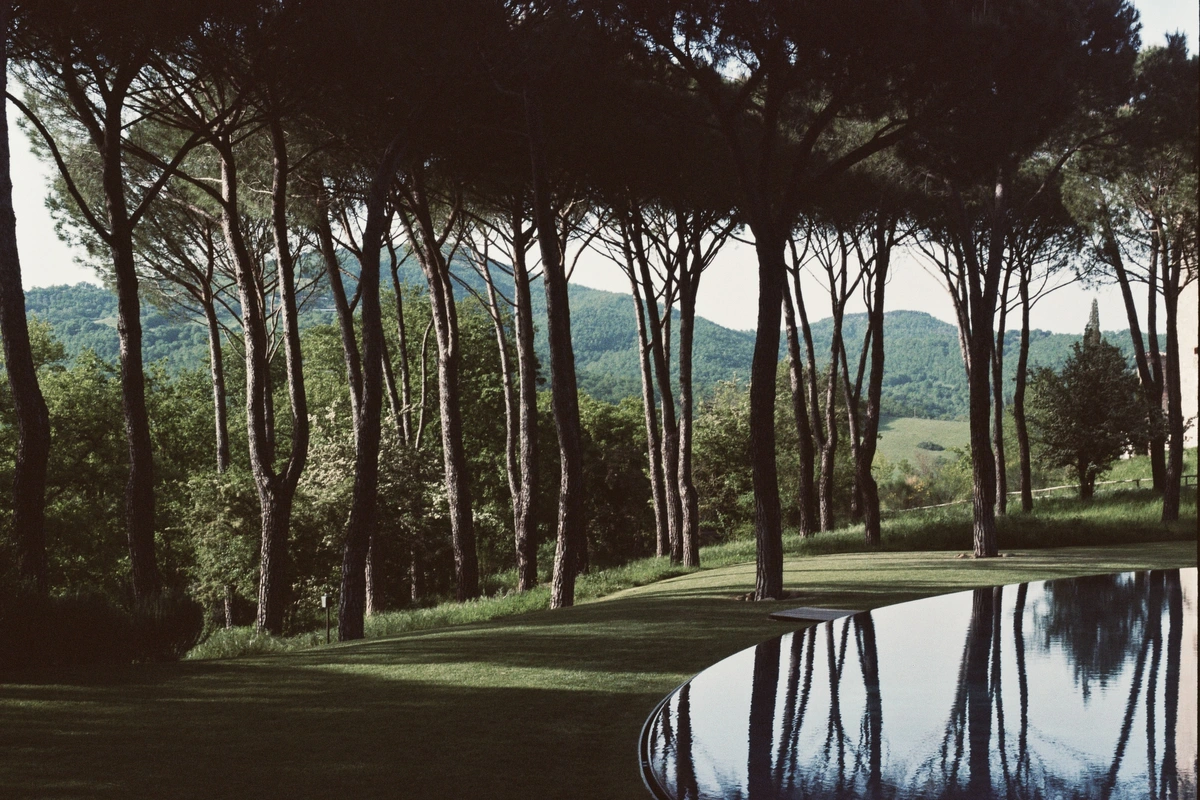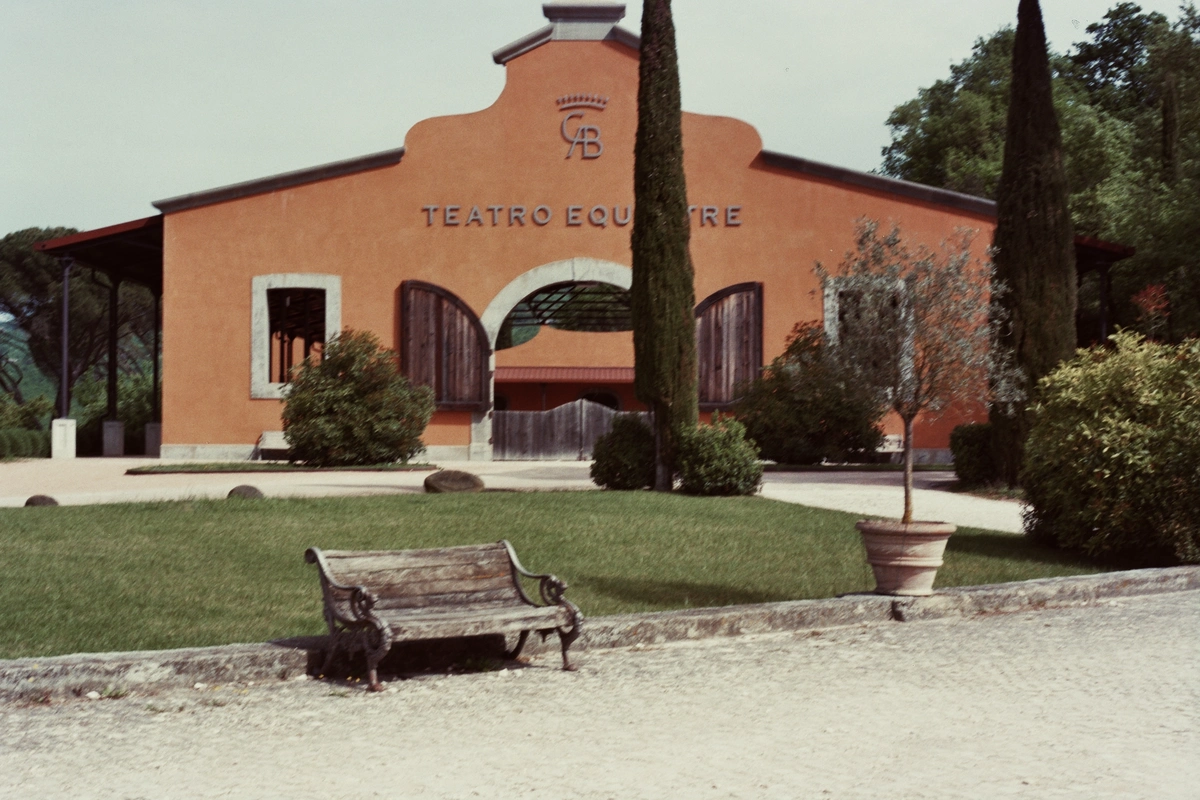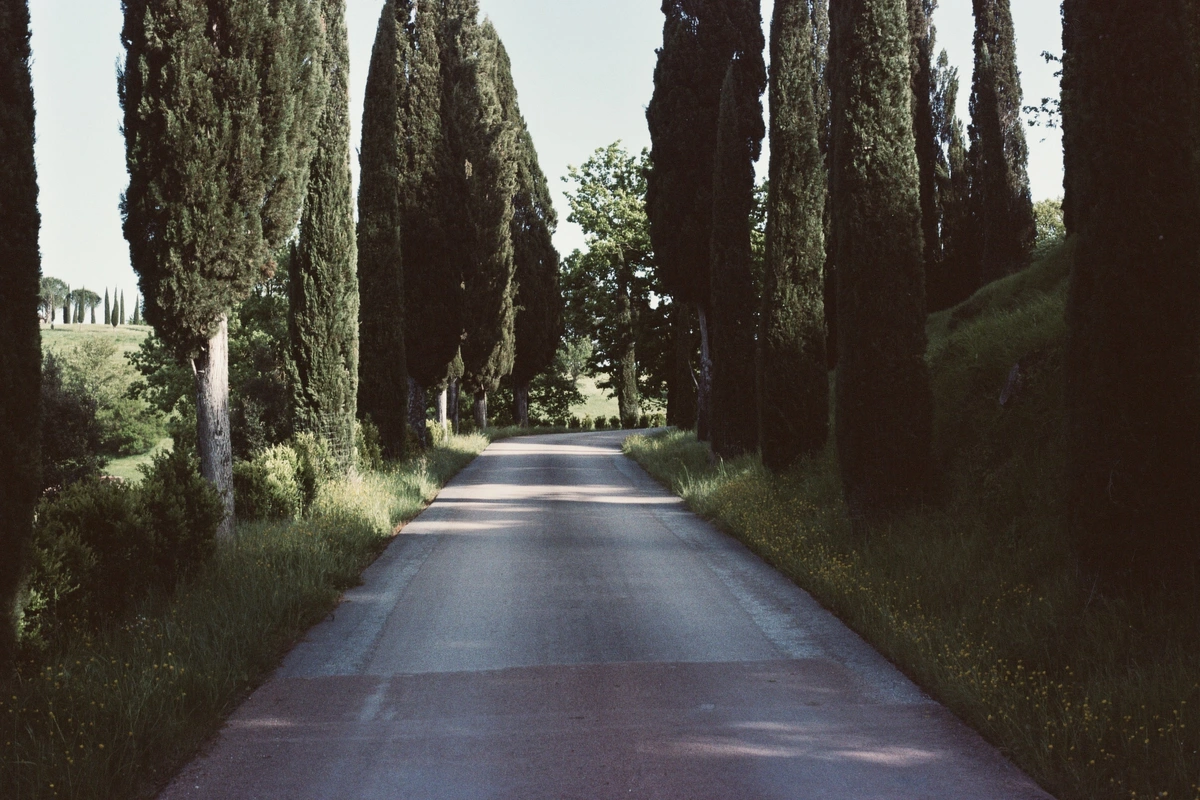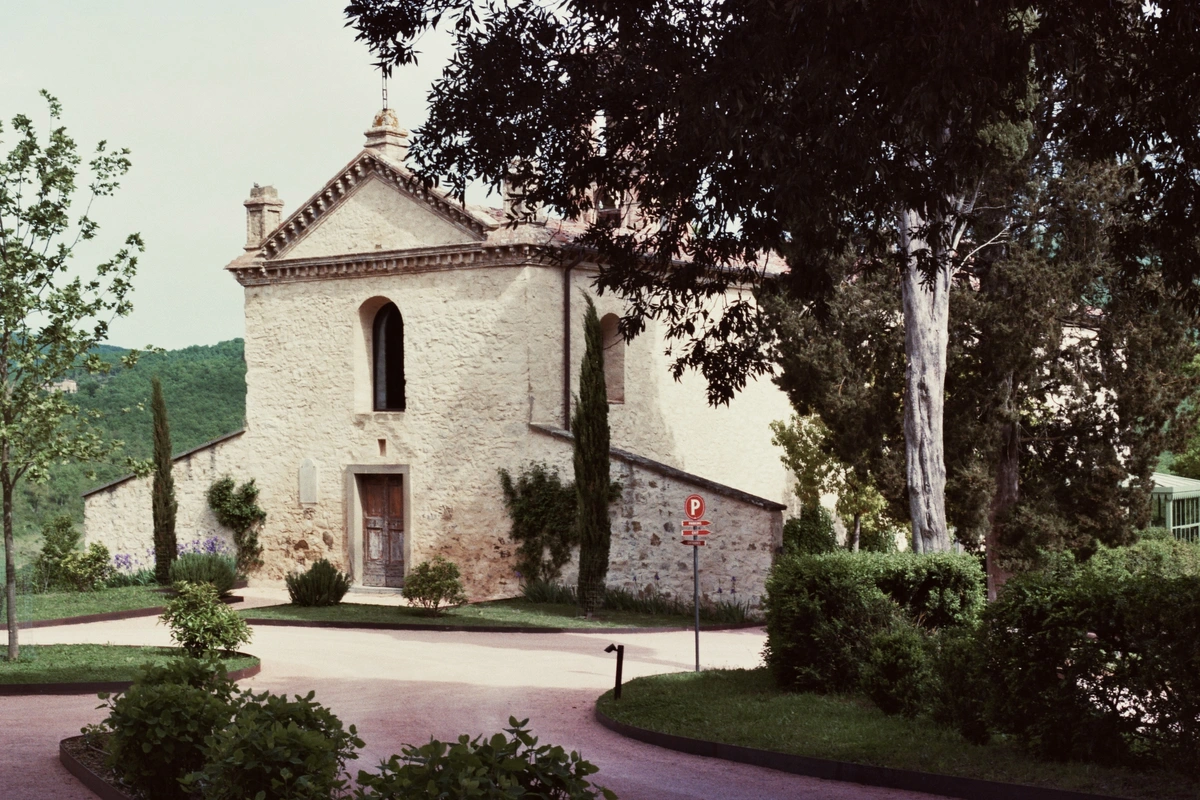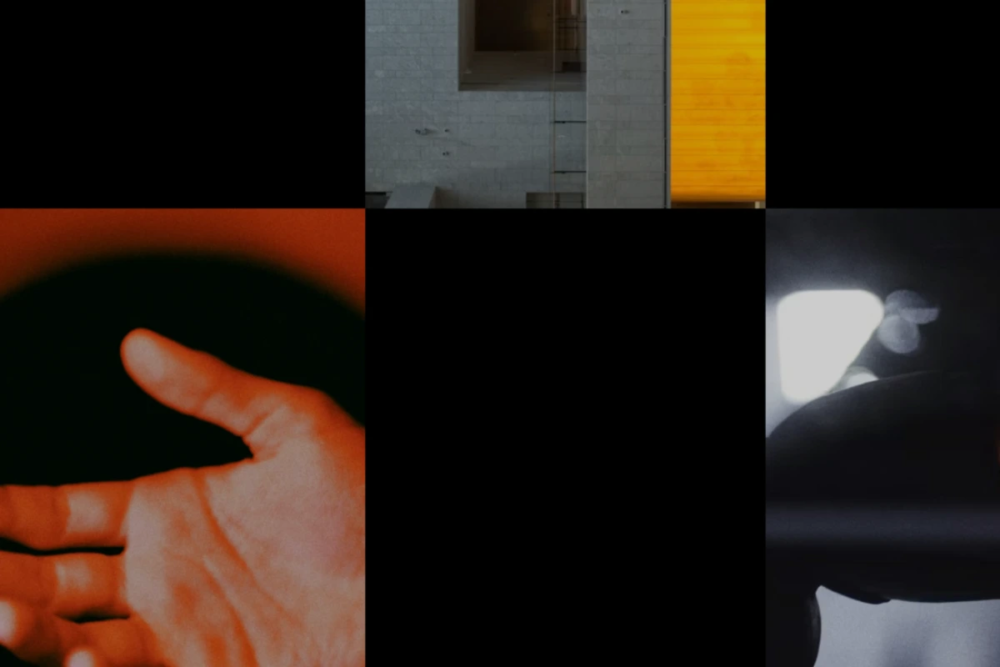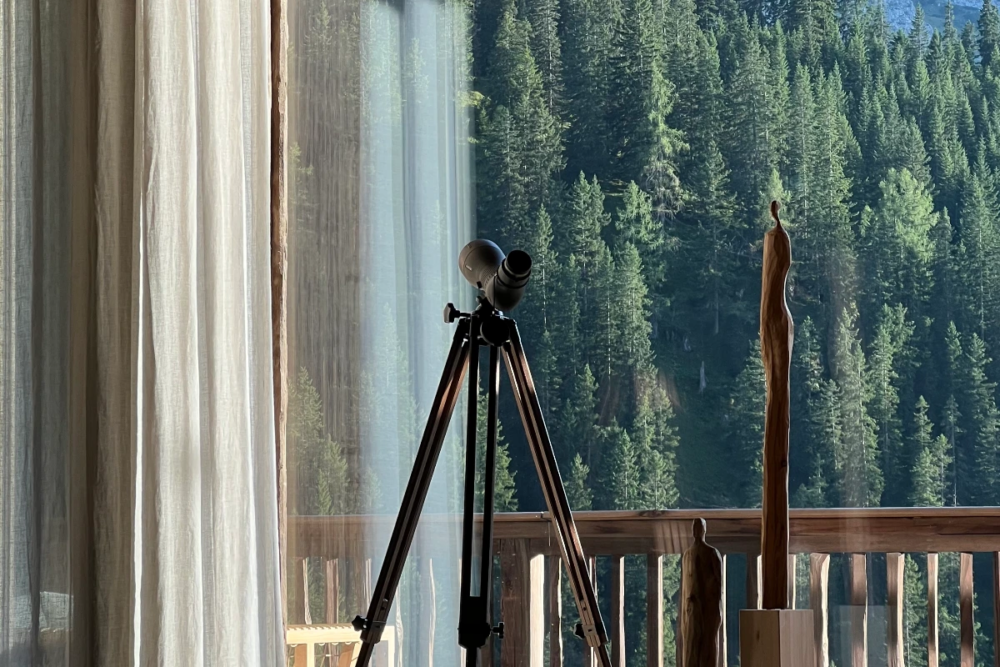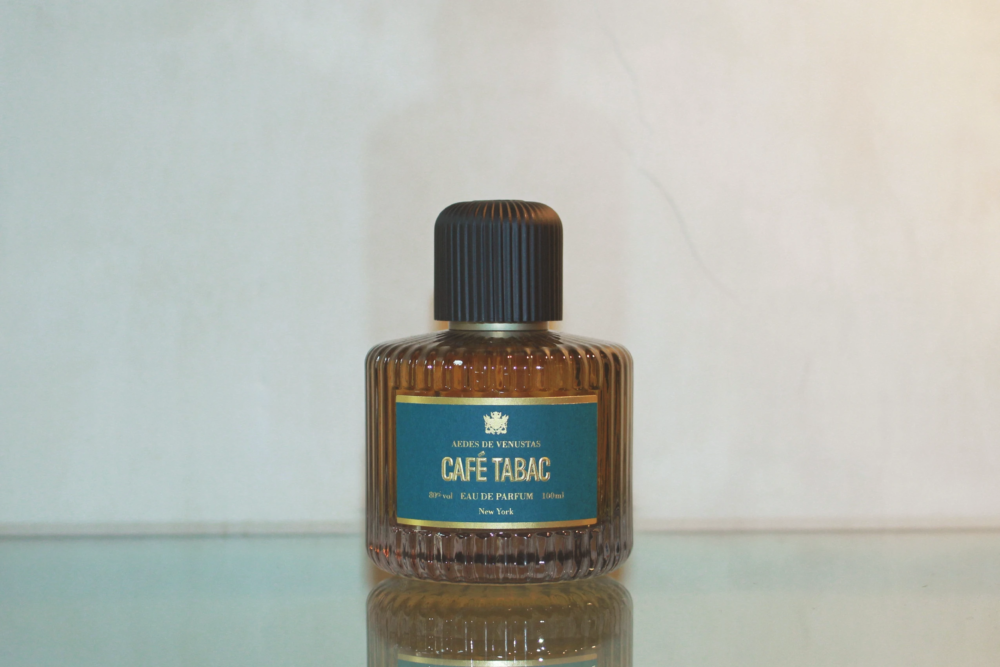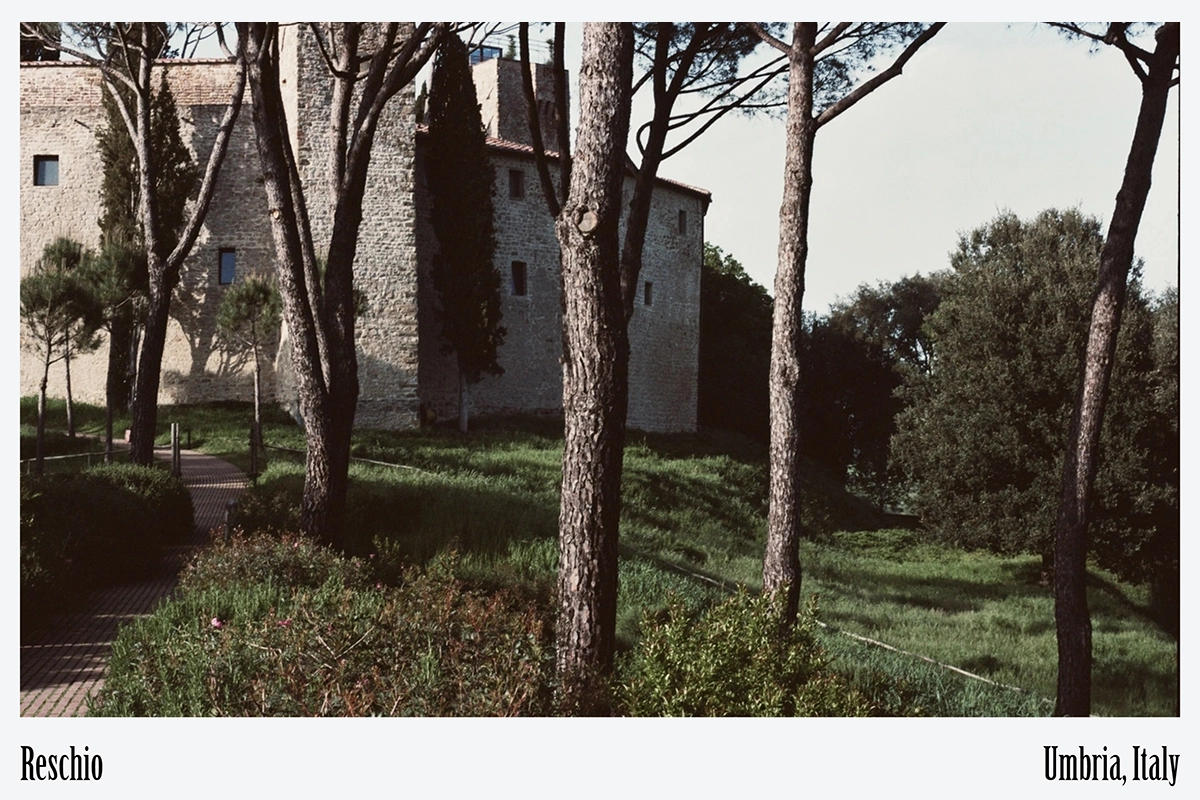
Chronicles from Reschio: 1500 Hectares of Regenerated Forest
Fifty farmhouses, a castle, an oak forest in Umbria: the Reschio Estate introduced by Benedikt Bolza and Nencia Corsini, where today over two hundred people work
From fortress to flourishing estate: Reschio’s journey of history, architecture, and regenerative living
In the green heart of central Italy, the Reschio Estate stretches over 1,500 hectares, a place where centuries-old architecture meets contemporary restoration, and where forests, wildlife, and artisanal traditions are carefully nurtured back to life. The estate’s transformation is guided by Count Benedikt Bolza, architect and heir to a noble lineage, who has shaped Reschio into a living model of conservation, design integrity, and agricultural regeneration. Oak forests that were stripped for fuel in the last century are now regenerating, mulberry trees once used for silkworm breeding have returned, and farmhouses long abandoned are being restored with painstaking attention to both heritage and modern comfort.
It is a landscape defined by layers of history — from its medieval castle and imperial connections to the Empress of Austria, to its role in the rural economy of tobacco and silk. And yet Reschio today is as much about the future as it is about the past, with infrastructure for fiber optics, rainwater systems that make it independent from public supplies, and an unwavering commitment to craft, quality, and ecological responsibility.
Architectural vision and the art of preserving identity across 50 historic farmhouses
When Benedikt Bolza took over the estate’s stewardship, his first task was to map its farmhouses, many of them crumbling ruins. He allocated one hectare of land to each, created detailed restoration designs, and sold them complete with his architectural plans — protected by a pre-emption clause to ensure that all work would be faithful to his conservation vision. “I have restored 31 houses to date, out of 50 existing ruins,” he says, each project reinforcing a coherent visual identity for the estate.
These houses were free from the constraints of Italy’s Fine Arts heritage restrictions but limited in volume to preserve the landscape. Every restoration maintained architectural proportions and agricultural context, ensuring Reschio’s character remained intact. Buyers from around the world, often seeking more than a vacation home, were drawn to a lifestyle deeply connected to nature yet rich in design refinement.
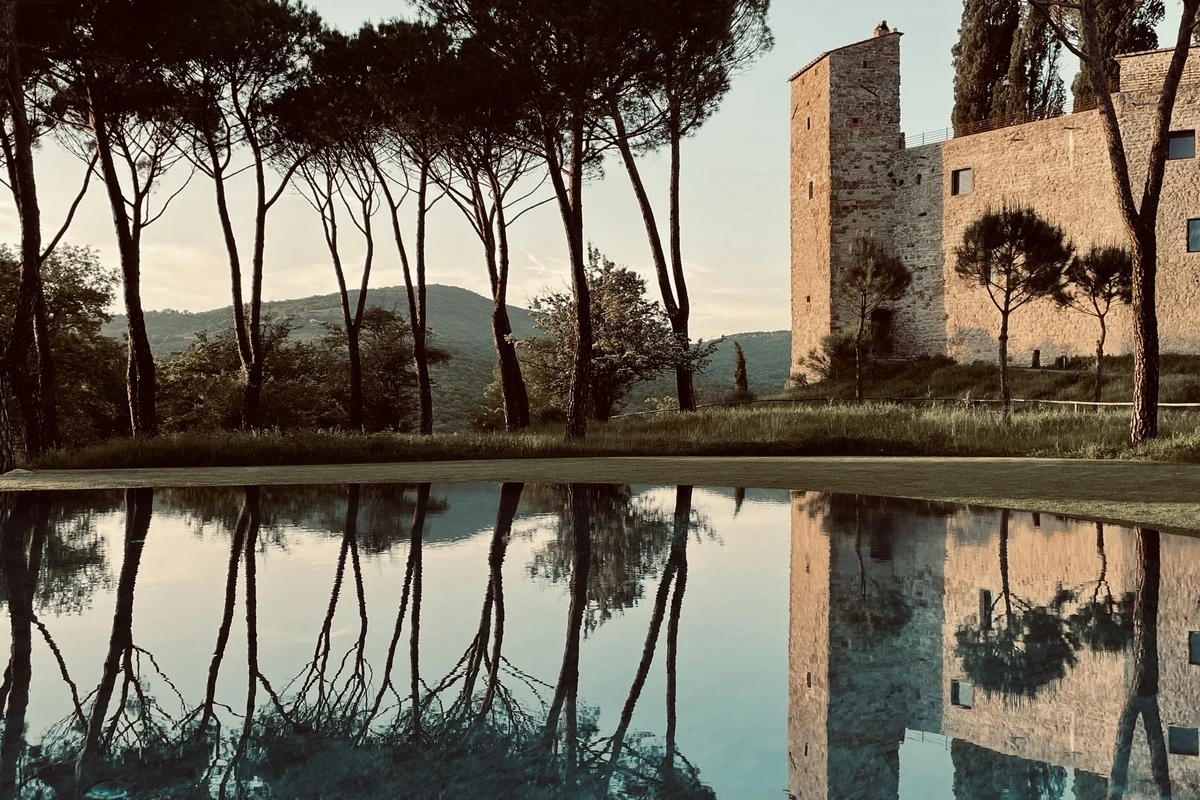
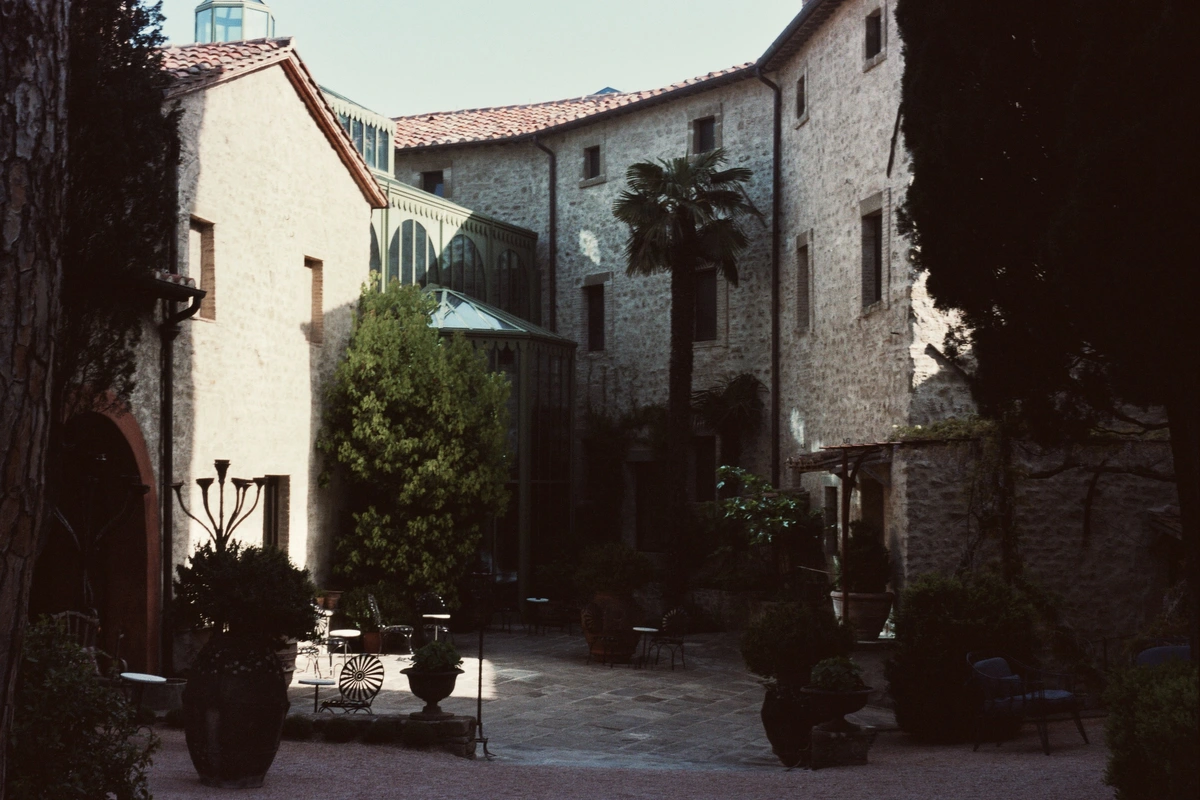
Cork, craftsmanship, and precision: the uncompromising approach to restoration at Reschio
Reschio’s restoration process rejects shortcuts. Cork panels are used for insulation instead of polystyrene, avoiding microplastic dispersion during processing. Fixtures are made by local blacksmiths — not just one, but three: “one is the most artistic, one is more technical. One is never enough,” says Bolza.
Contracts fix both the completion date and the final cost, with penalties for delays. “Those who buy from us want two certainties: time for work and final cost equal to the agreed one. We propose an expensive restoration job. I have no doubts about this.” For perspective, restored farmhouses at Reschio often reach around €10 million, a figure found in financial publications and high-end real estate listings.
The estate’s first sale, Villa Belvedere, set the precedent. With reclaimed floors fitted with cutting-edge underfloor heating for the 1990s, it was realized thanks to a client who trusted Bolza’s vision entirely. This allowed him to demonstrate what Reschio could become.
Independent water systems, summer dew, and resilience against drought
Reschio does not rely on public water supplies. Instead, a private rainwater system sustains the estate through a network of artificial lakes. Each lake connects to a gravel-filled well to filter out sediment, from which pumps push water uphill to a collector. Here it is purified and distributed to the castle and farmhouses.
In summer, morning dew clouds naturally irrigate and cool the soil — an ideal microclimate once used for tobacco cultivation. Today, while tobacco fields remain in surrounding areas, Reschio’s land is devoted to other crops and reforestation. August highs average 33°C, rarely surpassing 38°C, with nights cooling to 13°C. The water reserves are designed to last even if no rain falls from April to November, a resilience that mitigates climate change risk in a region where year-long droughts remain rare.
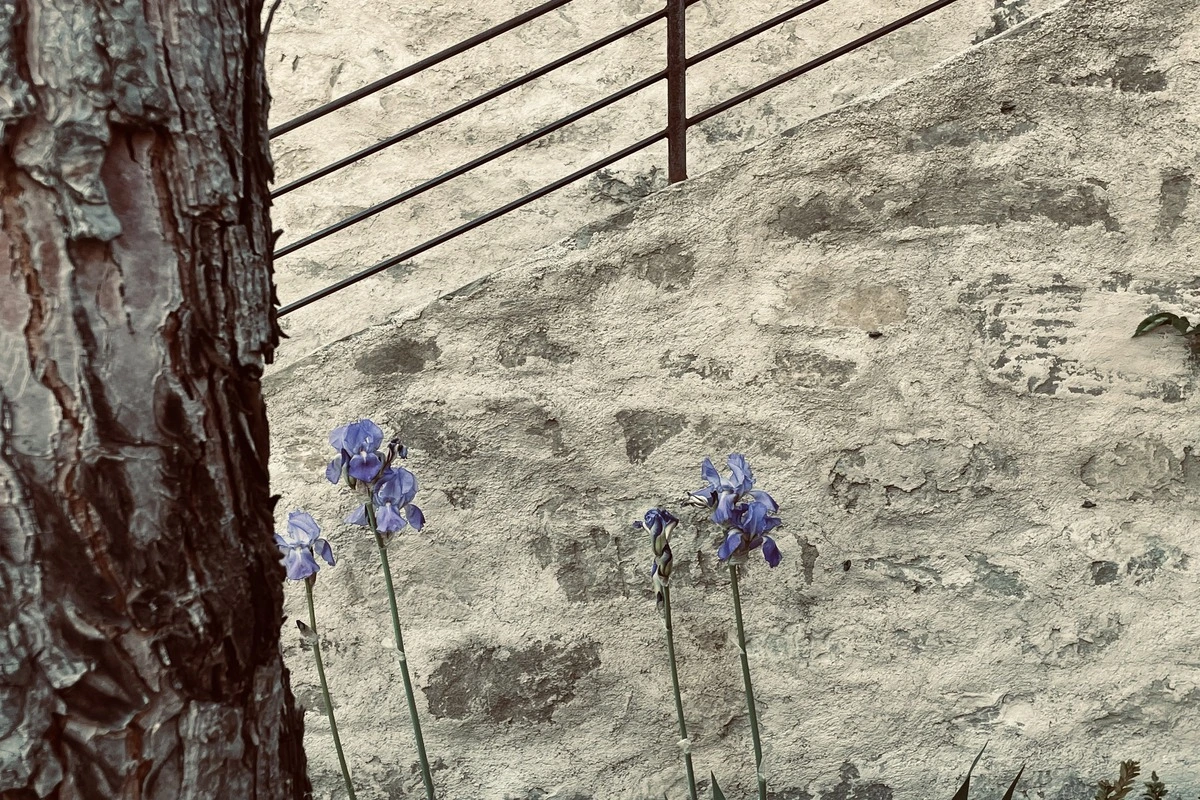
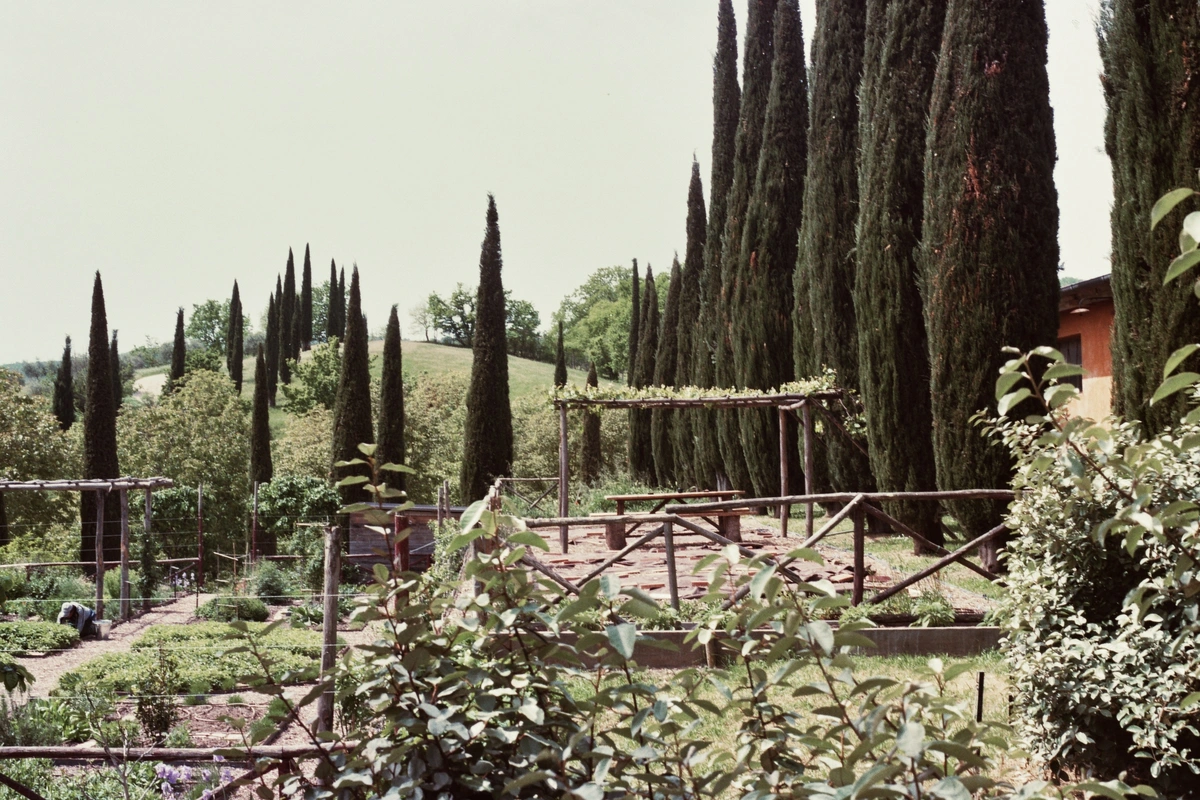
Imperial connections and archival photographs from the Military Institute of Florence
The Bolza family’s connection to landownership began in the late 18th century, when the Empress of Austria paid a weaver not with money but with Hungarian land. In the lead-up to the Second World War, as Hungary fell under Soviet influence, Count Antonio Bolza returned to Italy. He purchased the Reschio Estate at an auction selling off church lands from the former Papal States.
The Military Institute of Florence preserves rare aerial photographs from 1942, showing a starkly different Reschio: a bare, deforested landscape, mulberry trees for silkworm farming, and the castle in disrepair. Some of the cypress trees visible then are gone, while new ones, along with regenerating oak forests, now mark the estate’s rebirth.
From medieval fortress to discreet five-star retreat: the rebirth of Reschio Castle
The castle, whose name derives from the Latin Resculum (“fortress”), dates back to the 10th century and was granted to the Marquises of Monte Santa Maria by Charlemagne. In 1355, Emperor Charles IV elevated the estate to a fief.
Restored and reopened as a hotel in 2021, the castle conceals cutting-edge technology beneath its historic exterior. Heat pumps and air exchange systems are hidden underground, with service tunnels carved 15 meters into the rock to connect utilities without disturbing the architecture. Even the oval pool, designed to mimic a natural lake, combines seismic safety with aesthetics: an elastic stone-effect lining turns the water green in the light, while a custom-built Italian cover system solved what German engineers deemed impossible.
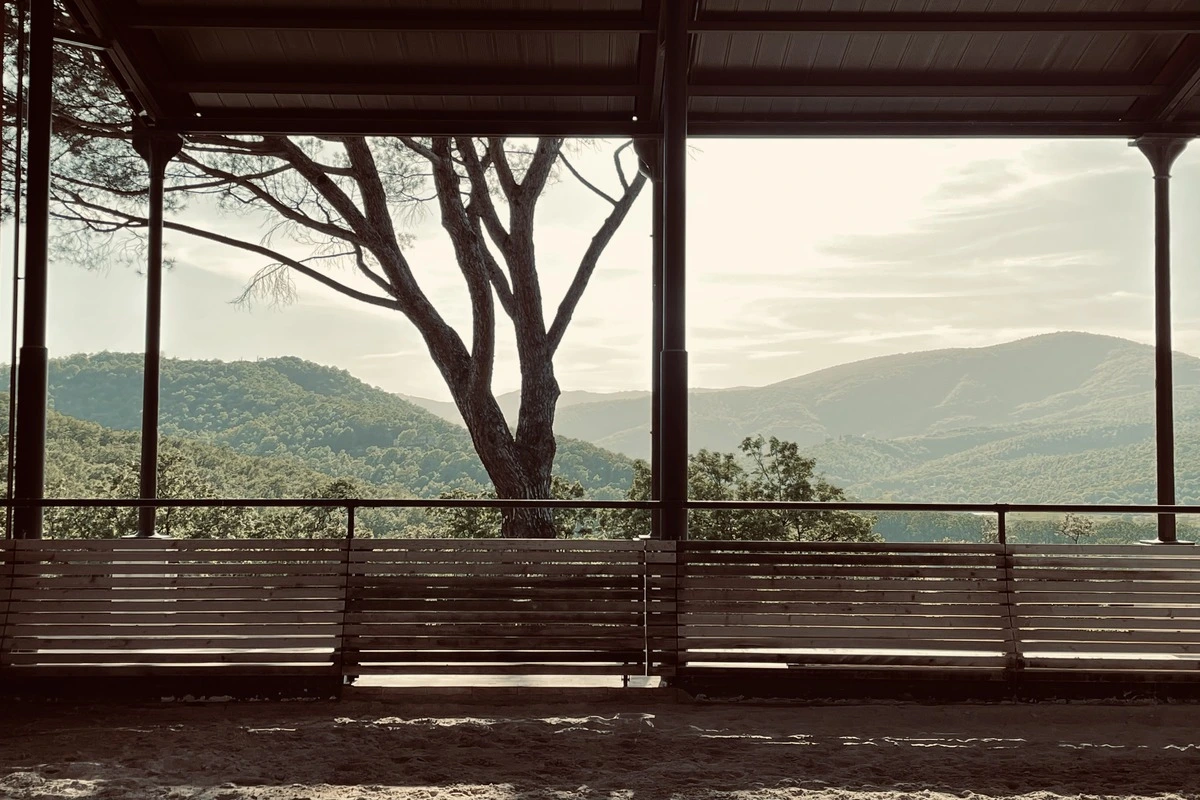
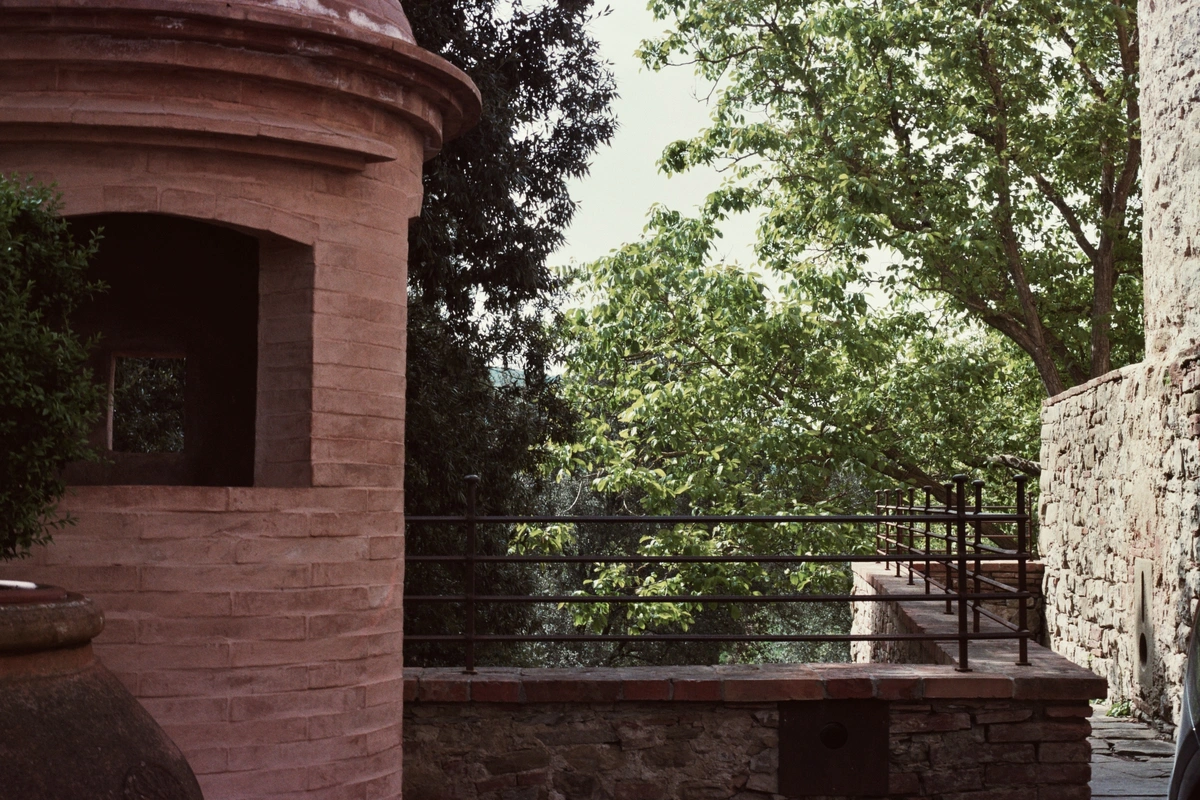
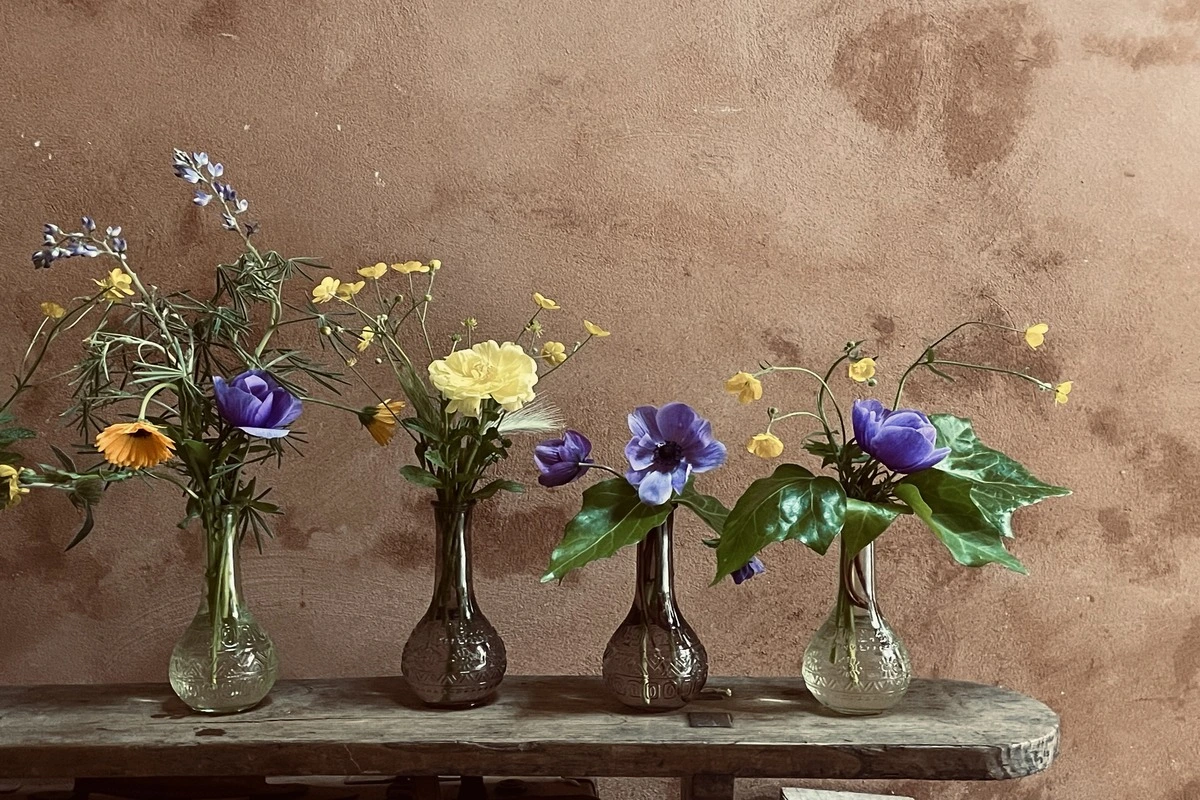
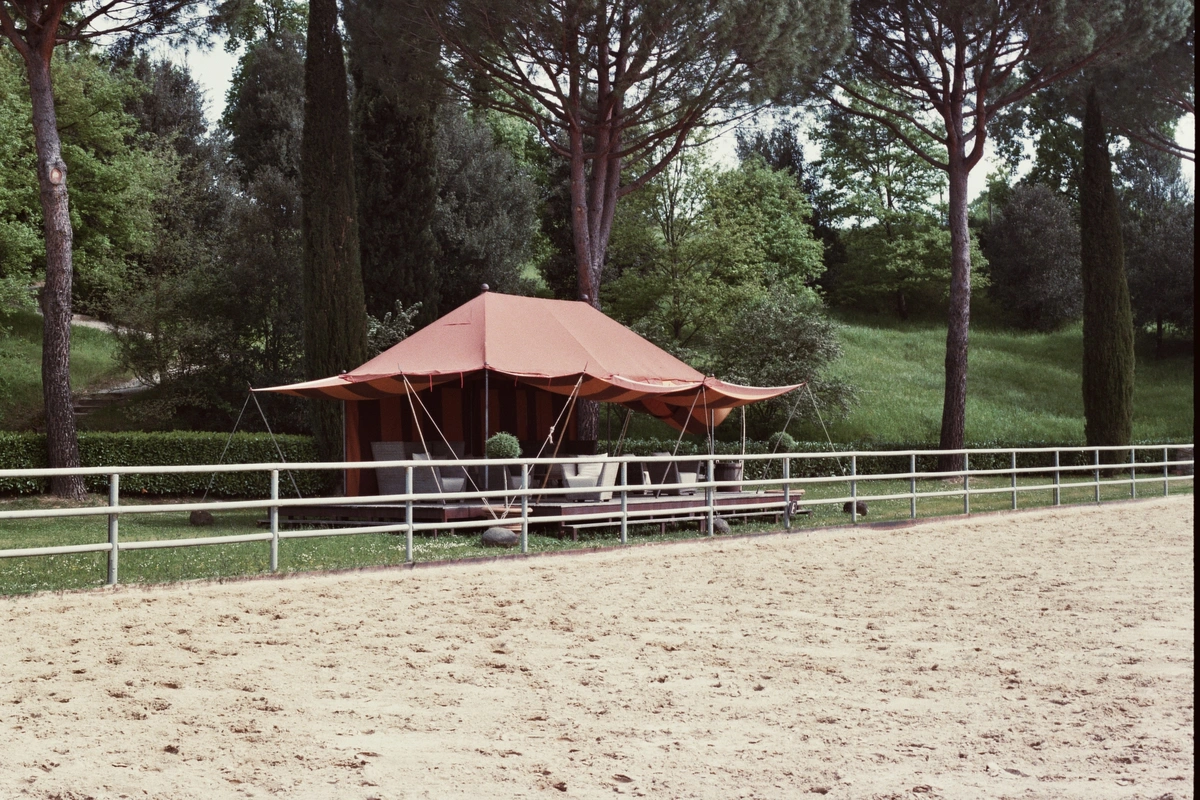
Nencia Corsini and the return of the working estate
The 30th anniversary of Reschio was marked by a Rizzoli publication in 2024, its cover featuring a chiaroscuro portrait of Nencia Corsini, photographed by Benedikt Bolza. Daughter of the IX Prince of Sismano, Nencia first visited Reschio to paint frescoes, later marrying Benedikt and raising five children.
She manages the vegetable gardens, cultivating leeks, spontaneous marigold, gray wormwood, Swiss chard, poppies, St. John’s Wort, and sorrel root — the latter harvested in its second year for medicinal use. She avoids plastic irrigation systems, preferring manual care of the soil. In the stables, Spanish purebred foals train for dressage, and in summer, the arena becomes an open-air cinema. Artisan crafts such as hand embroidery, herbal dyeing, marbled paper, and ceramics in Perugia kilns are once again part of the estate’s working life.
The Tobacco Drying Barn: industrial heritage turned creative headquarters
At the foot of the castle hill, the former Tobacco Drying Barn houses Benedikt Bolza’s architecture studio. Here, all electrical systems enter the estate before being distributed to the hotel, homes, and water pumps. Inside, brass tables are treated with acids to create rich surface textures in shades of ochre and burnt earth.
Reschio employs about 230 people and invests heavily in the surrounding community, sourcing materials locally and even financing the construction of a nursery to encourage families to settle in the area.
Regenerative agriculture, predator-proof poultry, and wines rooted in Etruscan heritage
Under Nencia’s guidance, Reschio practices regenerative agriculture, turning organic waste, manure, and even discarded straw-and-cotton hotel slippers into compost. The young oak forest is actively managed to restore the hillside’s natural ecosystem.
The chicken coop is engineered against predators, with mesh buried 80 cm underground and extended overhead to protect against foxes and hawks. Fencing keeps wild boars out — a lesson learned after they destroyed a promising hemp field overnight.
Some estate owners have planted vineyards, producing Rasenio wine, named for the Etruscan people. Its label bears the silhouette of a bronze figurine unearthed beneath an olive tree, tying today’s harvest to a lineage that predates the castle itself.
